Our process, from growing the grasses and grains to finishing our herd, happens on our farm in Western Kentucky. This allows us to control every aspect from seed-to-harvest.
The process begins in the pastures where our calves spend their first 8 to 9 months grazing in open fields. Afterwards, they are finished for 500+ days in a clean and spacious composting feed barn just 1.6 miles down the road from the pastures. Here, the cattle’s diet comprises a blend of home grown corn and a high ration of roughage (alfalfa hay and straw), plus some essential minerals for optimal nutrition. The combination of their slow feeding process and balanced diet keeps the animals healthy throughout, so that no hormones or antibiotics are needed. Finally, the finished cattle are processed locally and humanely just 26 miles away from our barn.
The key to our unique yet complex process lies in our state of the art Compost Finishing Barns. Thanks to our work with the University of Kentucky College of Agriculture, we designed and built an eco-friendly environment for finishing our cattle.
Resting on the top of a hill behind our grain storage facility, the barns took years to design and construct, providing a comfortable and sustainable environment for our cattle. Having the ability to grain-finish on site means a massive reduction in our carbon footprint.
Life Cycle
While most cattle in the beef industry are loaded on trucks and transported west to spend their final days in massive feedlots, ours remain on our farm in Kentucky.
Finishing
Unlike conventional cattle farmers who finish their cattle for an average of 180 days, we finish our herd for 500+ days. By taking a slower approach, our cattle gradually gain fat which ensures a dense and even marbling.
Diet
When the time comes to introduce grain into their diet, we use the grain grown on our farm. This is incredibly rare to our industry and allows us another level of quality control. We also use less grain and more roughage than our competitors.
Cooperative Cycle
One of the processes that sets us apart from other producers is the way we practice regeneration. We do this through our cooperative cycle.
How does this work? The grasses and grains we grow on our farm are used to feed our cattle, and the waste they produce is then used as compost fertilizer for the next season of crops.

Our Barns
The barns were carefully designed to eliminate any runoff into groundwater supplies.
Once a month, we bring in a truckload of sawdust from a local saw mill to use as a bedding agent for our calves.
Once a day - sometimes twice, depending on weather - we till together the sawdust with the waste, where microbes decompose the organic material aerobically.
Once a year, we harvest the compost from the barn and use it as an outstanding organic fertilizer on our crops.
Rainwater is collected from the barns and fields and repurposed for irrigation on our farm.
A combination of fans, open ventilation and the composting means that the barn is virtually free of insects and foul odors.







